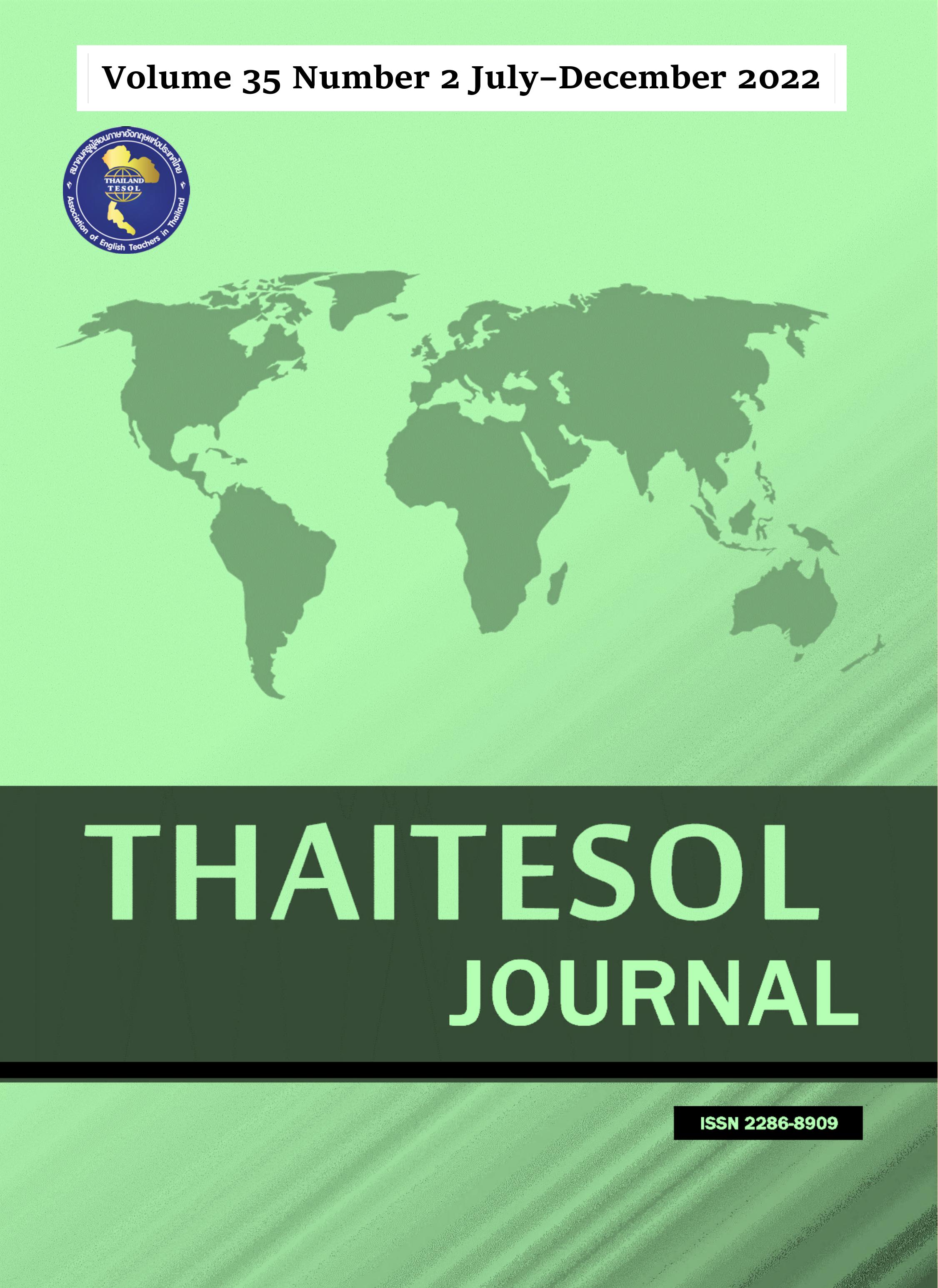Syntactic Complexity and Writing Quality in Students’ Technical Writing
Main Article Content
Abstract
Syntactic complexity is a crucial aspect of linguistic proficiency and thus understanding and supporting such development in learners is a keen concern for language teachers. Research conducted has shown growing sophistication of noun phrase structures by writers of different abilities in academic writing (Biber & Gray, 2010; Liu & Li, 2016; Parkinson & Musgrave, 2014). In comparison, relatively less is known about the development of syntactic sophistication among student technical writers. Adopting a discipline-specific approach, this study compared the complexity of noun phrase structures in student texts of three performance levels from high, mid and low. The data taken from 45 technical reports of university engineering students were analyzed quantitatively using automatic syntactic analyzers and qualitatively by manual coding and text examination. The results show that noun phrase complexity is a differentiating factor for different performance levels with the stronger texts exemplifying more varied modifying structures and in greater numbers. Complex and lengthy structures, such as multiple use of prepositional phrases and combined use of other modifiers such as -ed or -ing clauses, are common in postmodification, whereas premodifying structures are simpler in structure and shorter. The study also explored the contribution of complex noun phrases to expression of meaning, showing that complex syntactic structures are commonly used to perform a diverse range of language functions essential to technical communication, such as explaining a scientific mechanism. The close connection between syntactic complexity and expression of meaning suggests that structures for pre- and postmodification should be learned as a meaning-making resource.
Article Details

This work is licensed under a Creative Commons Attribution-NoDerivatives 4.0 International License.
Materials in THAITESOL JOURNAL may be photocopied for educational purposes. Under no circumstances may any part of this journal be photocopied for commercial purposes.


